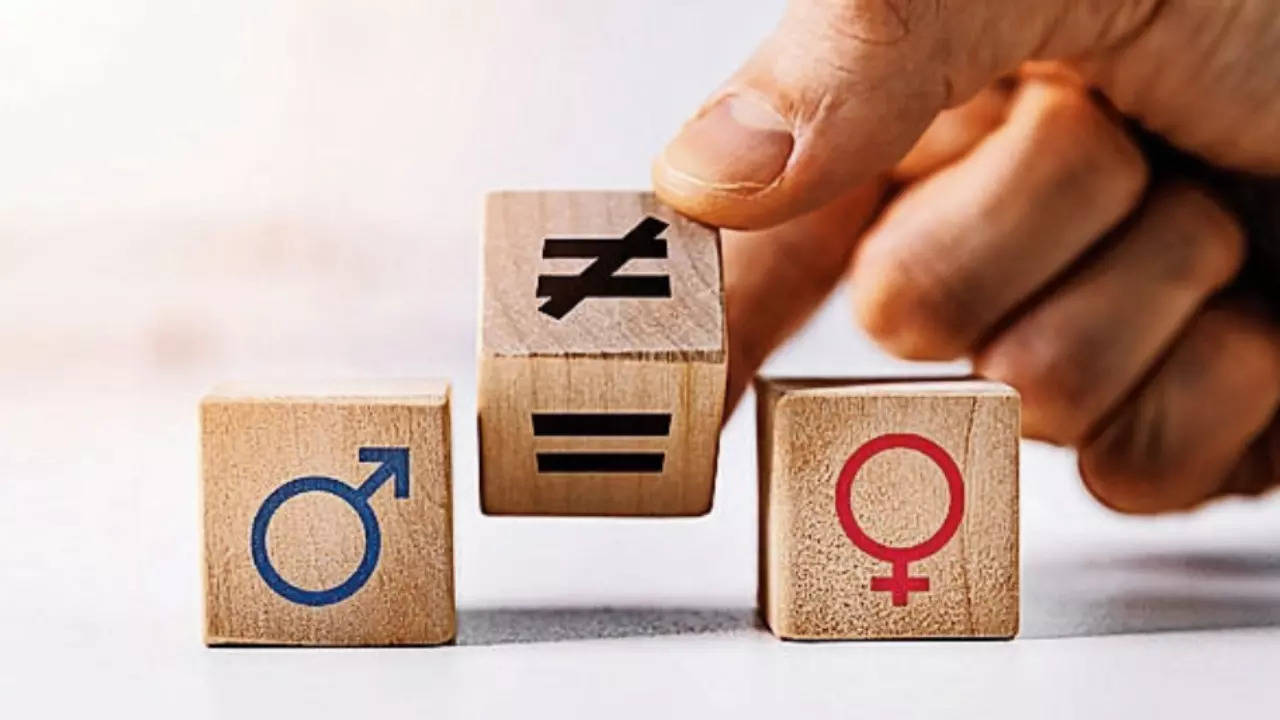NEW DELHI: India ranked 129 out of 146 countries, two ranks lower than the previous year with a marginally lower score (0.17 points), in the Global Gender Gap Report 2024 released by World Economic Forum on Wednesday. With a population of over 1.4 billion, India closed 64.1% of its gender gap in 2024.
The global gender gap score in 2024 for all 146 countries stands at 68.5%.“The lack of meaningful, widespread change since the last edition effectively slows down the rate of progress to attain parity. Based on current data, it will take 134 years to reach full parity — roughly five generations beyond the 2030 Sustainable Development Goal (SDG) target,” the report highlights. The Gender Gap Index shows that while no country has achieved full gender parity, 97% of the economies included in this edition have closed more than 60% of their gap, compared to 85% in 2006.
Last year, India ranked 127 on the index showing an improvement by 1.4 percentage points and eight positions from 135 in 2022. India had closed 64.3% of the overall gender gap, the 2023 report had observed, marking a partial recovery towards India’s 2020 (66.8%) parity level.
On India dropping two rungs in the latest index, the report highlights that “this slight regression is mainly the result of small declines in educational attainment and political empowerment, while economic participation and opportunity slightly improves.”
The report noted that parity in educational attainment is well underway, but challenges remain. Updated figures in educational attainment bring India’s parity levels slightly down from prior scores. “While the shares of women are high in primary, secondary and tertiary education enrolments, they have only been modestly increasing, and the gap between men and women’s literacy rate is 17.2 percentage points wide, leaving India ranked 124th on this indicator,” it is stated in the report.
In the political empowerment subindex, while India scores within the top 10 on the head-of-state indicator (40.7%), the country’s scores for women’s representation at the federal level, in ministerial positions (6.9%) and in Parliament (17.2%), remain relatively low.
The index ranked India’s neighbours Bangladesh at 99, China at 106, Nepal at 117, Sri Lanka at 122, Bhutan at 124 and Pakistan at 145. Iceland (93.5%) is again ranked first and has been leading the index for a decade and a half. Of the remaining nine economies in the top 10, eight have closed over 80% of their gap.
The global gender gap score in 2024 for all 146 countries stands at 68.5%.“The lack of meaningful, widespread change since the last edition effectively slows down the rate of progress to attain parity. Based on current data, it will take 134 years to reach full parity — roughly five generations beyond the 2030 Sustainable Development Goal (SDG) target,” the report highlights. The Gender Gap Index shows that while no country has achieved full gender parity, 97% of the economies included in this edition have closed more than 60% of their gap, compared to 85% in 2006.
Last year, India ranked 127 on the index showing an improvement by 1.4 percentage points and eight positions from 135 in 2022. India had closed 64.3% of the overall gender gap, the 2023 report had observed, marking a partial recovery towards India’s 2020 (66.8%) parity level.
On India dropping two rungs in the latest index, the report highlights that “this slight regression is mainly the result of small declines in educational attainment and political empowerment, while economic participation and opportunity slightly improves.”
The report noted that parity in educational attainment is well underway, but challenges remain. Updated figures in educational attainment bring India’s parity levels slightly down from prior scores. “While the shares of women are high in primary, secondary and tertiary education enrolments, they have only been modestly increasing, and the gap between men and women’s literacy rate is 17.2 percentage points wide, leaving India ranked 124th on this indicator,” it is stated in the report.
In the political empowerment subindex, while India scores within the top 10 on the head-of-state indicator (40.7%), the country’s scores for women’s representation at the federal level, in ministerial positions (6.9%) and in Parliament (17.2%), remain relatively low.
The index ranked India’s neighbours Bangladesh at 99, China at 106, Nepal at 117, Sri Lanka at 122, Bhutan at 124 and Pakistan at 145. Iceland (93.5%) is again ranked first and has been leading the index for a decade and a half. Of the remaining nine economies in the top 10, eight have closed over 80% of their gap.
